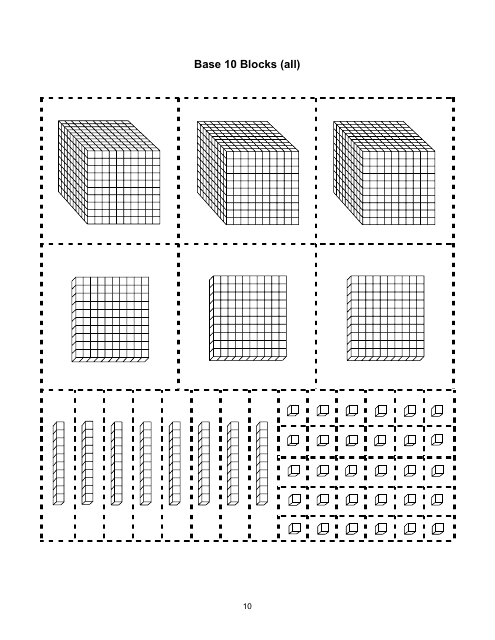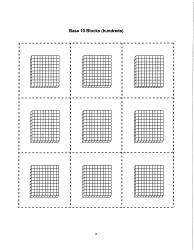Base 10 Blocks (All) Template
The Base 10 Blocks template is used to visually represent numbers in the base-10 system, which is the decimal system used widely across the world. It is often used in educational settings to help students understand place value and perform mathematical operations.
FAQ
Q: What are base 10 blocks?
A: Base 10 blocks are a manipulative tool used to teach place value and decimal concepts.
Q: What are the different types of base 10 blocks?
A: The different types of base 10 blocks include units (or ones), rods (or tens), flats (or hundreds), and cubes (or thousands).
Q: How are base 10 blocks used?
A: Base 10 blocks are used to visually represent and manipulate numbers. Each type of block represents a different place value.
Q: What does a unit block represent?
A: A unit block represents a single digit (0-9).
Q: What does a rod block represent?
A: A rod block represents ten times the value of a unit block.
Q: What does a flat block represent?
A: A flat block represents one hundred times the value of a unit block.
Q: What does a cube block represent?
A: A cube block represents one thousand times the value of a unit block.
Q: How can base 10 blocks be used for addition and subtraction?
A: Base 10 blocks can be used to visually represent numbers being added together or subtracted, making it easier to understand the concepts.
Q: How are base 10 blocks used for place value?
A: Base 10 blocks help students understand the concept of place value by visually representing the value of each digit in a number.
Q: Are base 10 blocks a common teaching tool?
A: Yes, base 10 blocks are a common teaching tool used in elementary math education.


